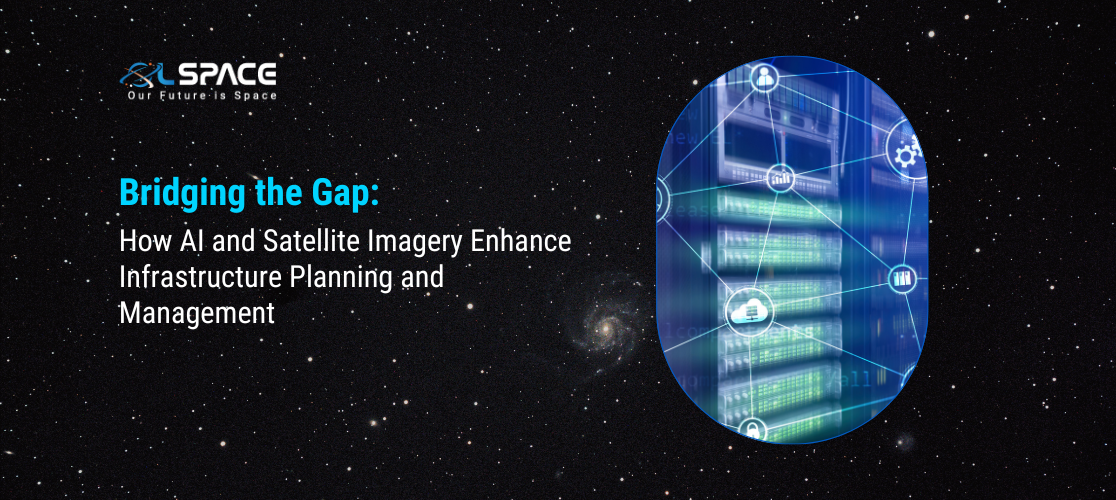31 May 2024
Bridging the Gap: How AI and Satellite Imagery Enhance Infrastructure Planning and Management

In the dynamic landscape of infrastructure planning and management, the integration of artificial intelligence (AI) and satellite imagery has emerged as a game-changer. This blog delves into the synergy between these technologies and their profound impact on shaping the future of infrastructure projects.
1. Unveiling the Power of Satellite Imagery:
Satellite imagery provides a panoramic perspective of our surroundings, offering invaluable insights into terrain, land use, and environmental conditions. With advancements in resolution and frequency, satellite data becomes a cornerstone for informed decision-making in infrastructure planning.
2. Empowering Decision-Making with AI:
AI algorithms, equipped with machine learning and computer vision capabilities, sift through vast troves of satellite data to unveil hidden patterns and correlations. This analytical prowess enables stakeholders to make data-driven decisions, optimising everything from site selection to asset management.
3. Optimising Site Selection and Design:
The marriage of AI and satellite imagery streamlines the site selection process, identifying optimal locations while minimising environmental impact. Moreover, AI-driven analytics facilitate the design phase by offering insights into terrain dynamics, infrastructure requirements, and potential risks.
4. Revolutionising Construction and Monitoring:
During construction, AI-powered monitoring systems utilise satellite imagery to track progress, detect deviations, and ensure adherence to project timelines. This proactive oversight enhances efficiency, mitigates risks, and fosters a culture of accountability across the project lifecycle.
5. Elevating Maintenance Practices:
In the realm of infrastructure maintenance, AI algorithms leverage historical data and satellite imagery to forecast asset deterioration and schedule maintenance interventions preemptively. By identifying emerging issues early on, maintenance efforts become more targeted, cost-effective, and resilient.
6. Overcoming Challenges and Seising Opportunities:
While the integration of AI and satellite imagery offers immense potential, it also presents challenges such as data privacy concerns and algorithmic biases. However, by fostering interdisciplinary collaboration and robust governance frameworks, we can harness these technologies to address pressing infrastructure challenges and foster sustainable development.
Conclusion:
In conclusion, the fusion of AI and satellite imagery represents a paradigm shift in infrastructure planning and management. By leveraging the analytical prowess of AI and the panoramic perspective of satellite imagery, stakeholders can navigate complexities, optimise resources, and build resilient infrastructure systems for the future.
